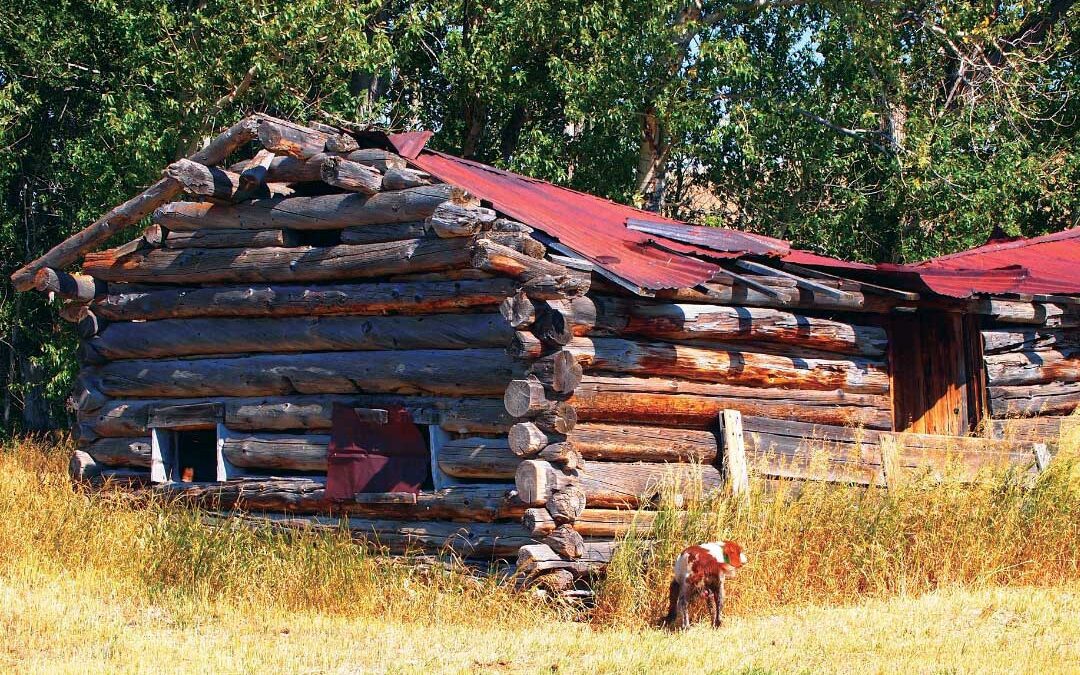Without the ordinary, there would be no extraordinary. If there were no karaoke, how would we recognize the spine-tingling excellence of Pavarotti or Bocelli? How would we recognize the genius of Einstein or Hawking if there were no ordinary thinkers? And who would know the names of Hemingway or Faulkner or Dickens or Beryl Markham unless there were writers who wrote by the standard rules of writing? The ken of the magnificent springs from the womb of ordinary experience.
I’ve been at this business for a long time. Been a bird hunter even longer. I’ll be the first to acknowledge that even a bad day of bird hunting is pretty damned good, but habitat is limited today, and good wild country with good wild birds and good dogs and good guns and good companions are sometimes hard to assemble at the same time. Not to denigrate the wonderful people and places that provide the bulk of bird shooting in the USA today, but if you do enough of it, it acquires a certain flavor of the ordinary. I guess it’s sort of like eating prime rib every night. In time a fellow just begins to crave something more or something different.
And then, there are times and experiences that stand out like the Star of India in a box of rocks. Over 60-odd years of bird hunting, I’ve had enough ordinary experiences to know the exceptional when I see it. I am one of the lucky ones who are privileged to hunt many times a year and have done so for most of my life.
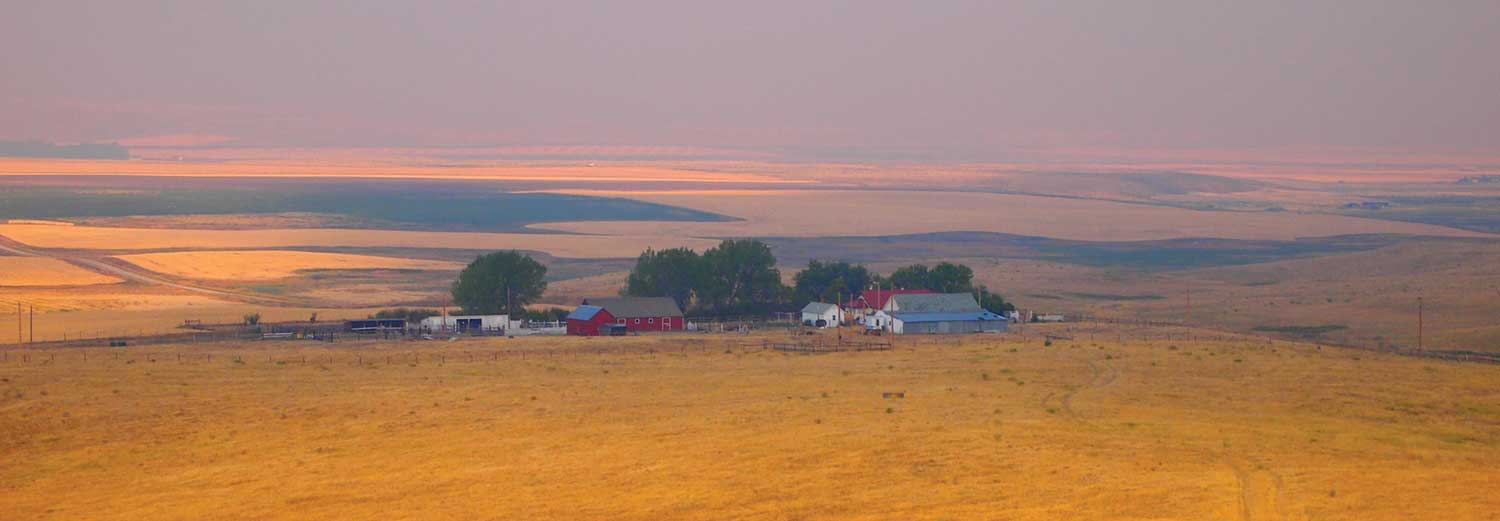
The sprawling grasslands around this Montana farm are home to countless coveys of sharptails and Huns.
I first hunted with Pete Rogers’ Pigeye Outfitters a couple of years ago. Pete runs his show out of Moccasin, Montana, and hunts more than 150,000 acres of farm and grassland, primarily for Huns, sharptails, and ringnecks. He can also organize hunts for prairie chickens and sage grouse on a limited basis. In addition, he has more than 100,000 acres of government lease in the Little Belt Mountains where he pursues big game and grouse, both blues and ruffs.
We never got to run the story because of scheduling and space constraints and all the other gremlins that plague publishing these days, but I will never forget the experience. And I hope that I’m lucky enough to go back someday.
The whole thing grew out of a conversation in our ad department. “You want something different? Well I know a guy who knows a guy who . . . ”
Next thing I knew, I was getting off a plane in Great Falls, Montana. From there I drove a little over an hour down US Highway 87 to Moccasin and the bird hunt that I’ll fondly recall on my dying day. Hopefully, one fine and distant day I’ll have the chance to tell Saint Pete as we walk up behind a pair of celestial pointers,” Yep, this is good, but you ought to see the place that Pete Rogers has in Montana!”
I arrived on the front end of a clear, cold Montana night that gave me a new perspective on why they refer to the state as Big Sky Country. The only other client was a fellow out of Colorado Springs who had hunted as much as I had, and we sipped spirits and talked bird-hunting long into the night while looking out the front of the lodge at more stars than I‘ve seen this side of Tanzania. The air had that crisp, clean chill that calls all bird hunters to be out and about, and the new moon was in hiding and the horizon was just this side of forever. I never knew the sky was so big.
I hunted with Pigeye for three days. Ice rimmed the horse trough when we woke on the first morning and the wind had a good head start on its way from Canada to Mexico, so we took our time over a couple of extra cups of coffee before we collected Pete’s Brittanies and headed for a nearby ridge that looked out over the adjoining farm where you could see so far that the plots and plains just disappeared into the blue haze.
Until that day I was never a great fan of Brittanies. Being an unreconstructed Southerner, I’m partial to rawboned, spare pointers and silky haired, flat-headed setters. Of course, I had hunted behind a fair number of Brittanies, but the only one that I had ever owned was a cantankerous cuss named Oscar who was a fair bird-finder, but had a penchant for finding and rolling in the foulest mess within a hundred miles. Needless to say, every ride home was an unforgettable experience, and after a couple of years, I let some other optimist have him for a pittance.
These guys, however, changed my whole attitude about Brittanies. Sis and Breeze were a pair of small females, and Vinnie, an up-and-coming young male. Gracie was the matron and Tater, the old pro in the group. They all had nose and stamina, and desire.
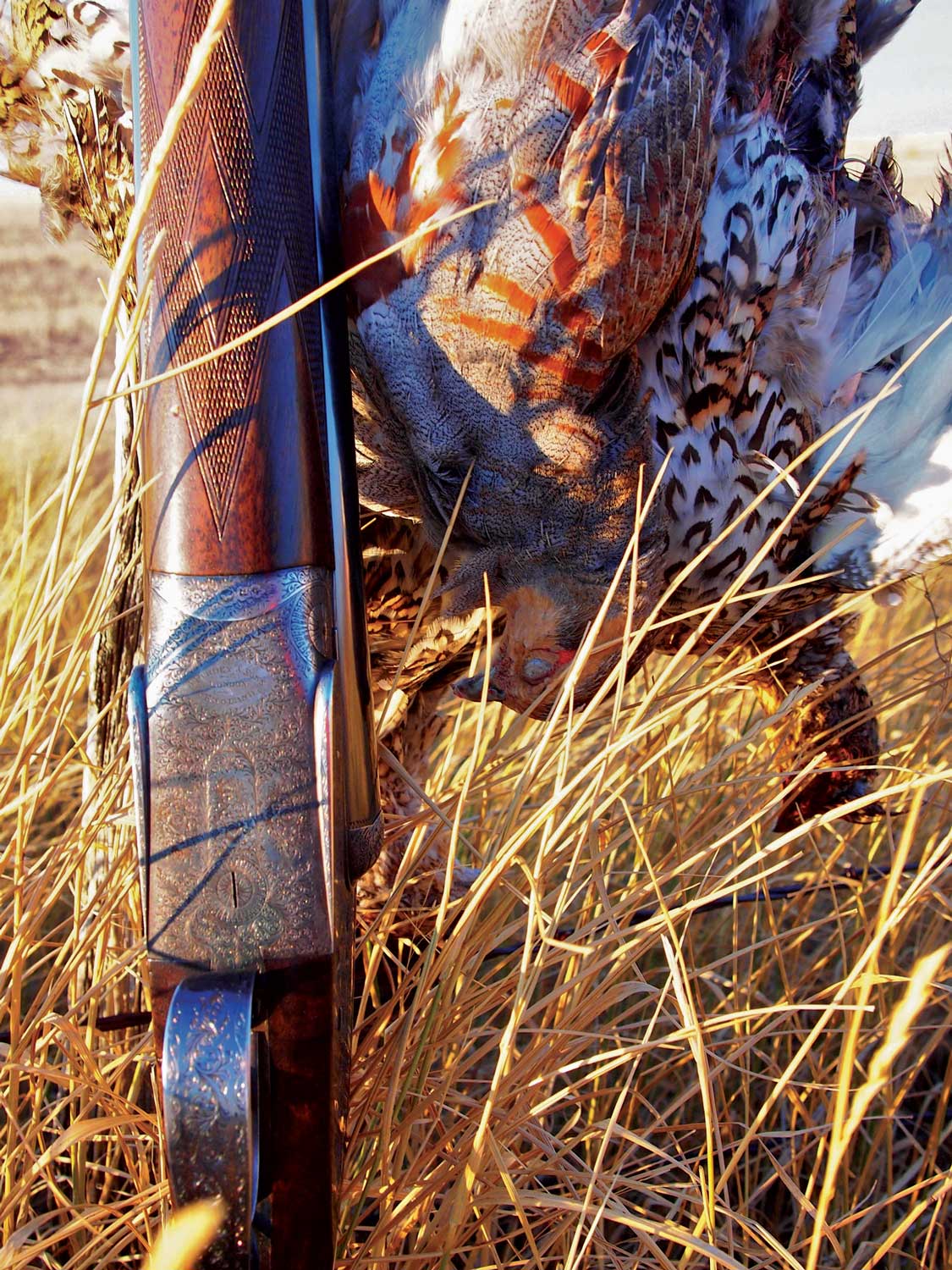
The author’s old 12-bore Purdey—“my longtime companion”—poses with a mixed bag of Huns and sharptails.
We didn’t waste any time, and got into birds on our first cast. We climbed a couple of hundred yards straight up a grassy ridge that concealed small creases and folds scattered across its side and then cut across the face of the hill, paralleling the ridge. The grass was rife with Huns, and the folds held snowberries and rosehips still clinging to the bush to attract the sharptails. It was only moments before we had a string of three Britts strung out in as pretty a point-and-honor train as you’ve ever seen.
I was feeling pretty good about the old man’s shooting when a nice bunch of sharptails came up, and I took a clean right and left to start the day. Of course, while I was congratulating myself, the unfailing law of averages caught up to me and I followed with a double whiff on the covey of Huns that we found a scant hundred yards down the ridge. I had barely reloaded from that debacle when a single sharpie flushed from somewhere above and crossed high and far in front of us like a driven pheasant. I congratulated myself for being smart enough to carry a 12 when he folded cleanly to my right barrel.
For the next couple of hours we hunted down the grassy hillside, picking up birds every few minutes. Then we looped back over the ridge and found a couple more Huns from the covey that that had flushed wild into a little canyon that split the ridge like the forks of a snake’s tongue.
After working the canyon, we loaded the dogs and ourselves into the truck and headed for fresh ground. Along the way, we pulled into little place called Eddie’s Corner that surely served as the prototype for every high plains, middle–of–nowhere crossroads diner that I ever imagined. The place was crowded with farmers and ranchers, so we took a stool at the counter and dawdled over an “Eddie Burger” and some apple pie and listened to Patsy Cline flowing from the jukebox until it was time to go.
I still had room for a handful of Huns and one sharptail before I filled out, so we made a beeline for another farm that Pete knew where a harvested grainfield and an untended field circled an abandoned farmstead. Over the years the shelterbelt surrounding the home place had gone wild and threatened to consume the dilapidated buildings.
We got into birds immediately. The dogs pointed a covey of Huns that flushed out of range and scattered into the shelterbelt where we took the rest of our limit one by one, like grouse from a poplar thicket. In the process, we picked up my remaining sharpie.
I’ll never forget the partridge that flushed wild in the thicket, then ducked into the open door of an old horse barn and sailed to safety out the other side. I think he’d done that before.
Back at the lodge a couple of hours later, the sinking sun turned the Montana prairie to rose as I confessed to Pete over a fine prime rib that I didn’t believe that I had ever had a more satisfying day of shooting.
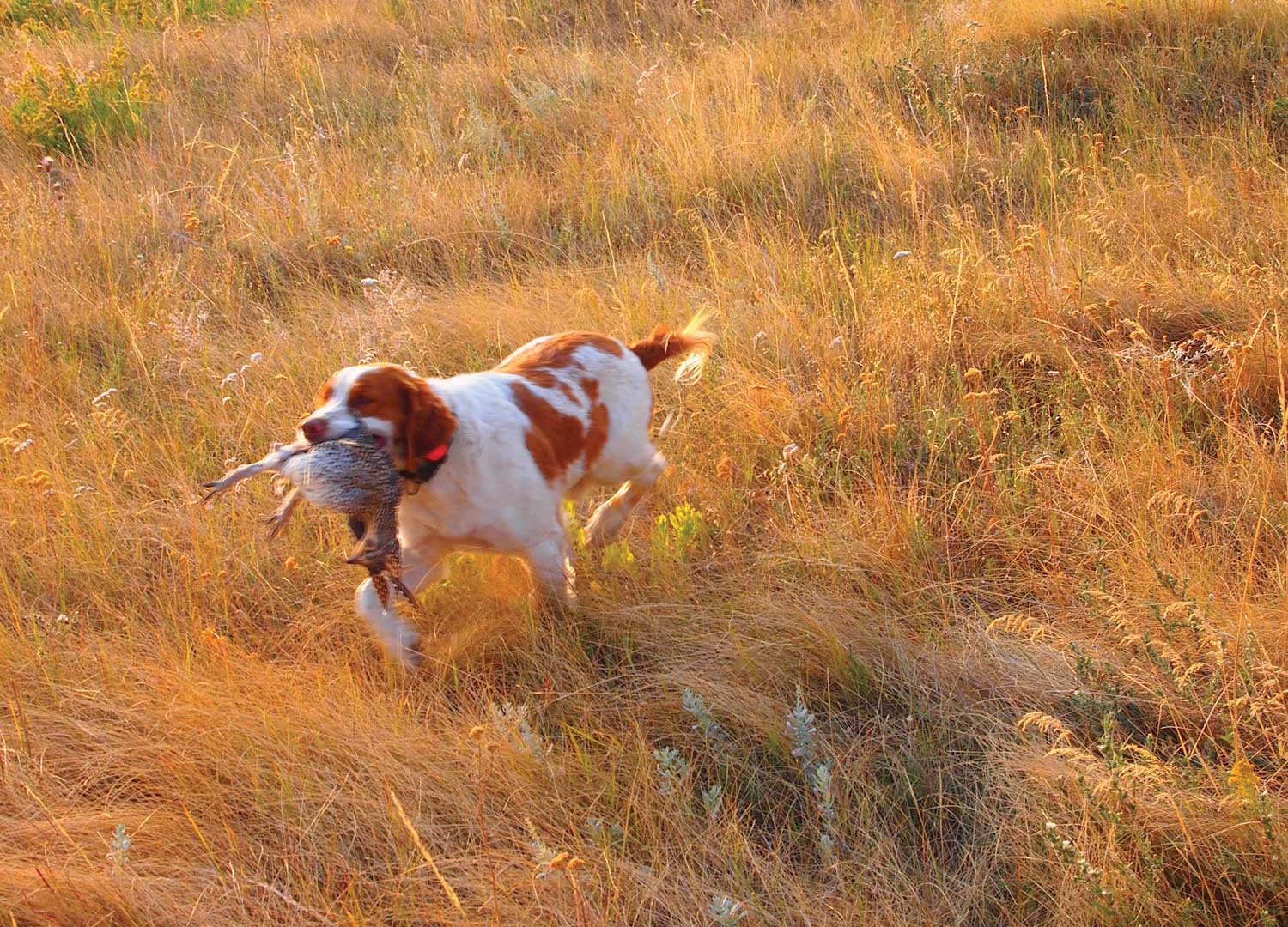
As good as our hunt had been, the next day turned out even better. Pete had some other hunters to tend to and I was assigned to a long-legged, fast-walking guide by the name of Ron Sherer.
A fancier of Brittanies, Ron had a trio of beauties: a fast, friendly little bitch named Sophie, and a couple of males named Jefe and Stash. The latter was named for his facial markings that made him look like a dog with a Fu Manchu mustache and a constant grin. Stash was a big, burly hulk of a dog that had more drive and stamina than any Brittany that I’d ever seen, and he quickly became my favorite of the bunch.
Ron had planned for us to spend the day on a big farm below Stanford in the foothills of the Little Belt Mountains, but had a little spot that he wanted to check out on the way. He had seen a big flock of sharptails hanging around a pair of rust-and-gray silos in the center of big grassy field. We were barely out of the truck when Stash got birdy. His nose was to the ground and his stub tail was cutting frantic little circles in the air as he trailed the flock. After a quarter–mile, I was beginning to doubt, but Ron knew his dog.
“Give him time, he’ll find ’em,” he said.
And he was right. After about a half-hour of trailing, the burly dog locked up. There was a hard wind from the left, and when a huge flock of sharpies flushed, they quickly caught it and banked hard right, gaining speed fast. It felt like I’d never catch up to them, but I did and a big cockbird tumbled and then a hen. A fine start to the day.
As soon as we collected the two birds, Stash started trailing again with Sophie right behind him. When he peeled off to the right and locked up, however, Sophie continued on about another 75 yards and pointed too, with Jefe backing from the left.
“Lets check out Stash first,” Ron said. “Then we’ll pick up the other two.”
True to their training, Jefe and Sophie held tight while we flushed the lone sharpie that Stash had pinned. The bird attempted the same tactic as the main flock, but it didn’t work for him, either, as he thudded to the ground following the single shot.
When we reached her, we found Sophie pointing a single bird that flushed at 40 yards and flew straight away. I chose my left trigger and the full-choked tube brought him down with a thump.
Less than 30 minutes into our morning we had a limit of sharptails with four shots. Ron stood there, staring into the horizon, then looked back at me with a big grin and said, “Looks like it’s gonna be a good day. I guess we better go look for some Huns.”
It turned out to be a truly spectacular day. It was bright and clear, though by the time we reached our original destination the wind had picked up considerably. The birds held well despite the wind, and when they flushed and caught the breeze, they were as challenging as any birds I’ve ever seen.
We had followed a winding gravel road that led us miles deep into the ranch where it ended at a tilted, ramshackle barn. The dogs got birdy as soon as we put them down and a big covey of Huns flushed wild, then settled into a small alfalfa field along the tail end of the hillside below us. Of course we followed, and the dogs pointed right where the birds had dropped in. We were expecting to put up singles, but when we walked up, we got into a surprise double-flush. A big flock of sharpies flushed to our right while a covey of Huns broke out the left side along a small creek that rimmed the lower edge of the field. By the time I got “unflustered” and sorted things out, I managed to pull a straggler from the tail end of the covey with my second shot. And felt mighty good about it!
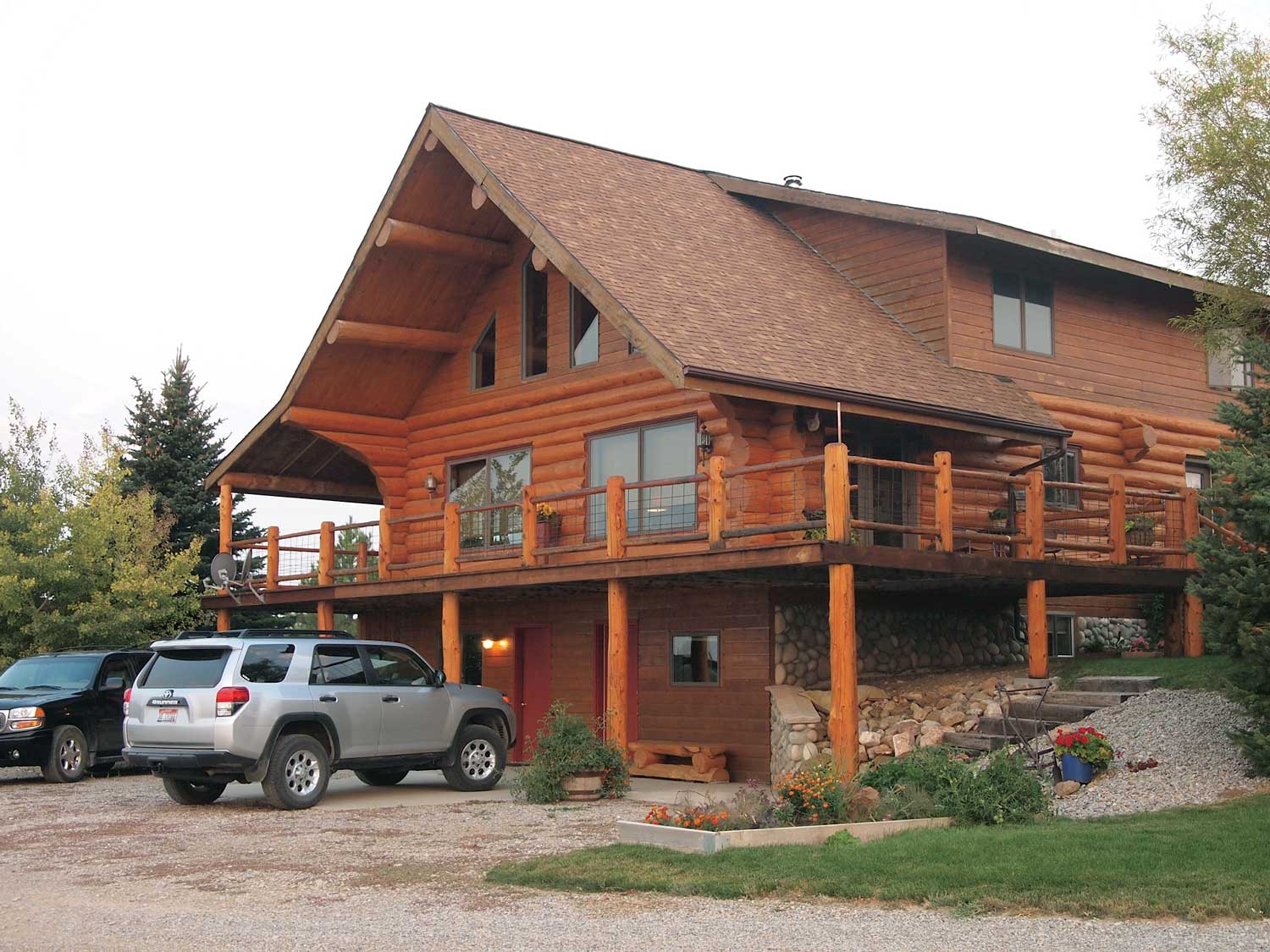
The Pigeye Lodge is located about an hour’s drive from Great Falls, Montana.
It was, altogether, as pretty a day for bird hunting as I’ve ever seen. We followed the creek for a mile or so, then crossed the high ridge on the other side and worked our way back, picking up birds from time to time as we went. We propped on elbows in the lee of the barn, opened the lunch sacks that Ron had brought and relaxed in the sunshine with a limit of Huns in the bag before two o’clock.
The next day we followed the South fork of the Judith River up into the forested lands of the Little Belt Mountains, past the spot where Charlie Russell lived when he began his painting career in the West, up through the Pigeye Basin and on into the high country to try and roust out some blues and ruffs. We found plenty, too, and got a couple of dozen flushes, but my shooting just wasn’t up to the challenge of the wily mountain grouse. And pride precludes any more comment on the specifics.
In the end, I can only say that it was probably my best bird hunt. Ever. And I think that what truly separates this experience from all the others is that it was totally, utterly real. It was big and beautiful and filled with dogs and birds and guns, and there was nothing false or staged about it. Pete has genuine, “no kidding,” real dogs. And real birds and miles upon miles of honest-to-God real “bird country.” It’s the real deal!
Contact Pete Rogers at (406) 423-5332 or visit his website: www.pigeye.com for more information.

